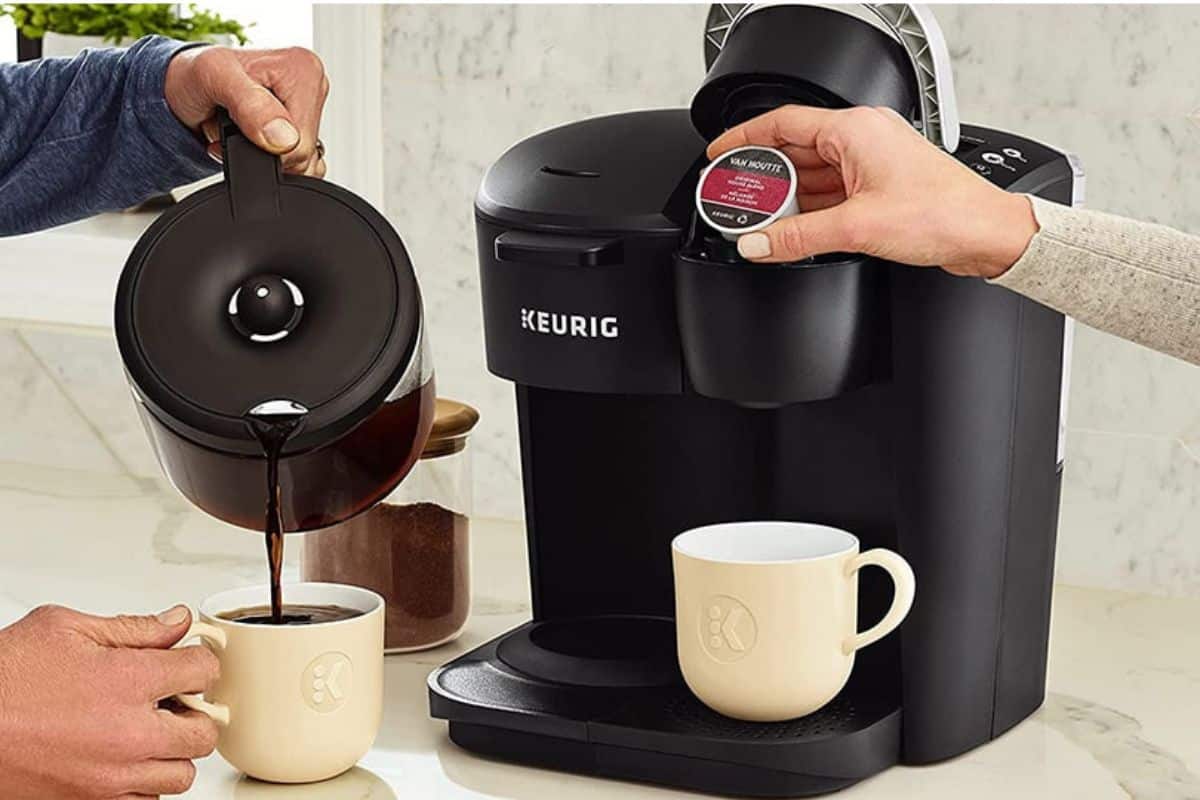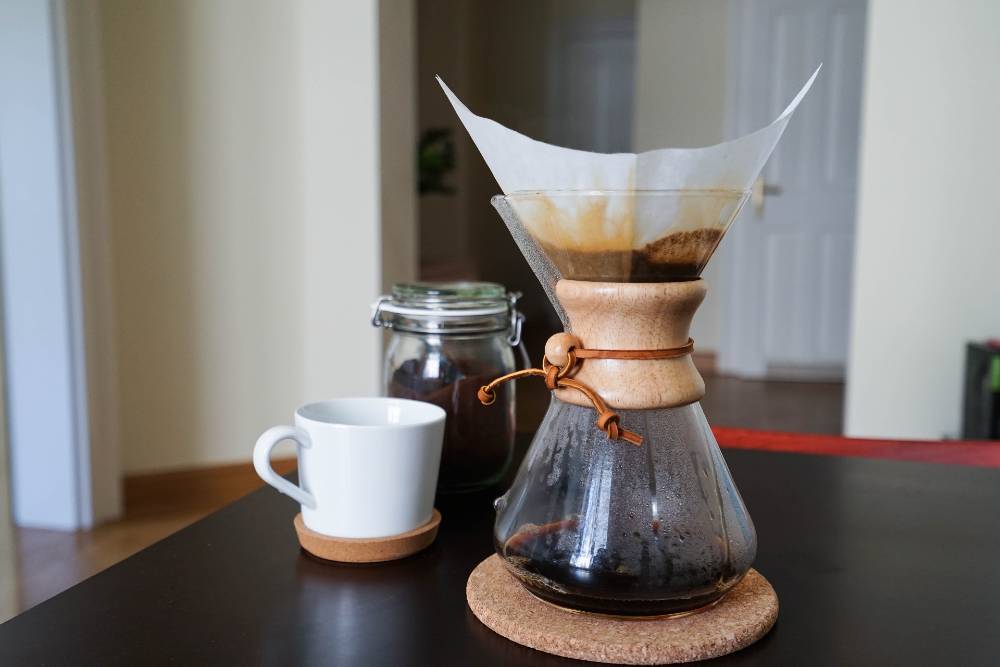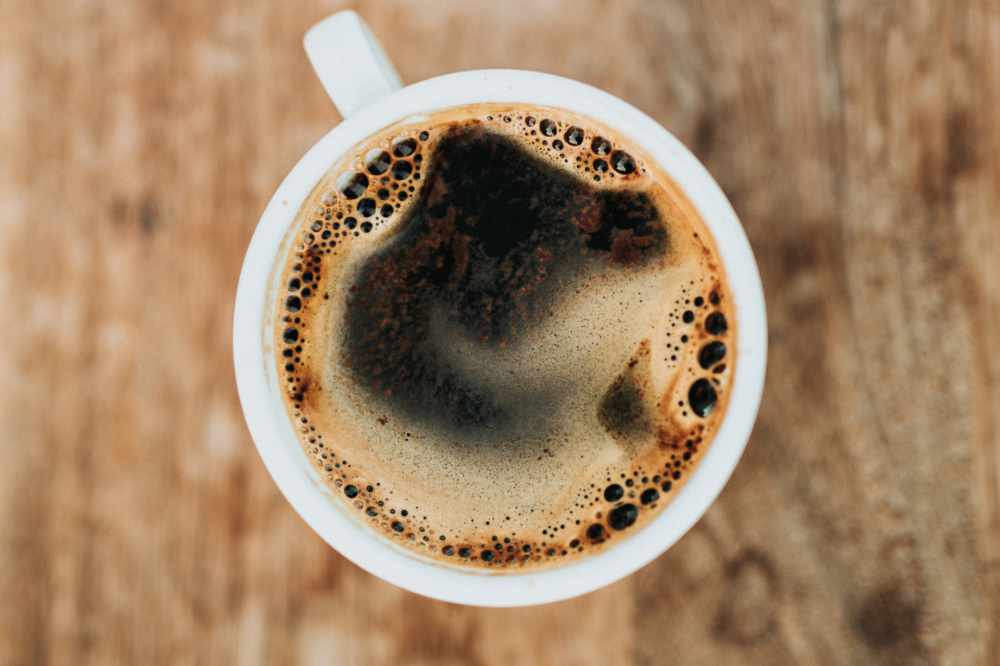The first “modern” version of the stovetop percolator was patented in 1889. From then until the rise of the drip coffee machine almost 100 years later, the percolator was a staple in American households and the go-to way to make and drink coffee.
I first was introduced to percolated coffee on a visit to the countryside. There was something about the perked smell filling the small country house and the robust taste of the cuppa that hooked me on this brew method. Though it may take a few trial and error attempts to get it right, the rich flavor you are able to get from percolated coffee is not soon forgotten.
An electric percolator takes a lot of the guesswork out of the percolating process. It allows you to get a consistently great cup of coffee by using temperature controls and timing the brew. These controls keep your brew from over-extracting and allow you to enjoy a great cup without the headache.
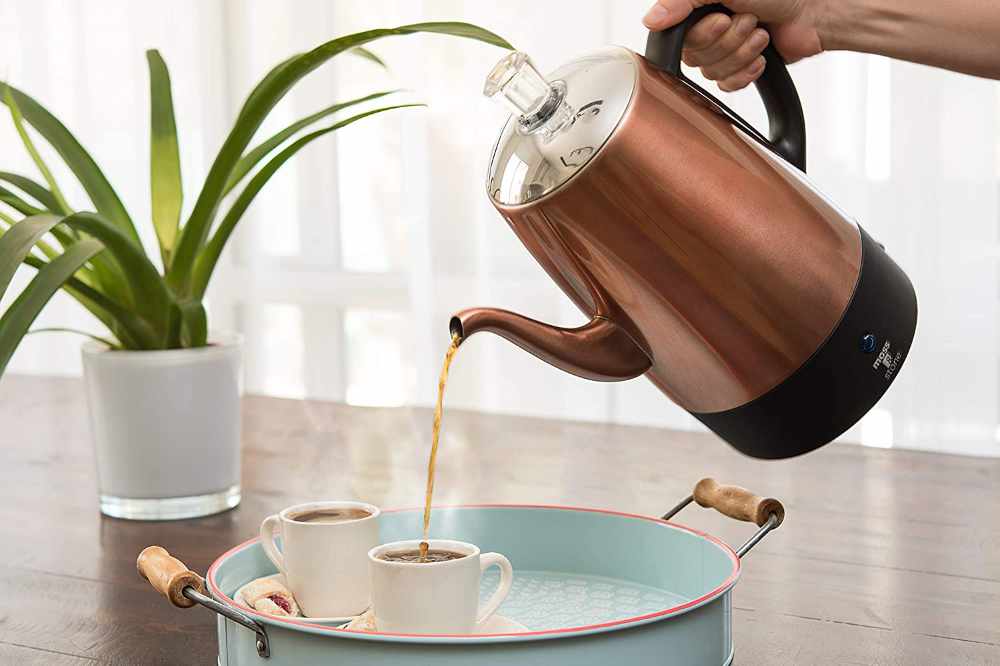
How a Percolator Works
Percolated coffee has a great, rich coffee flavor if you do it right. In this coffee method, hot water is heated until it rises through a tube into the coffee grounds which are kept in the top filter basket. They then slowly drip back into the pot before recirculating through the grounds.
A percolator follows the same idea as a drip coffee machine, except the percolated brew will be stronger than drip since it recirculates back through the grounds. There are two kinds of percolators out there: the stovetop percolator and the electric percolator. Let’s see how each works!
The Stovetop percolator
The stovetop percolator is usually made from stainless steel, aluminum, or glass. The percolator will go directly on top of the stove burner to perk coffee. These pots are easy to clean afterward as there are no electric pieces involved.
You will want to make sure to check your coffee to water ratio. It’s best to measure the amount of water and coffee you use to get a consistent brew every time. We recommend going for a 1:15, coffee to water ratio. That’s 1 gram of coffee for every 15 milliliters (or grams) of water. Another rule of thumb to his this ratio is one tablespoon of ground coffee for every 75 milliliters (or grams) of water.
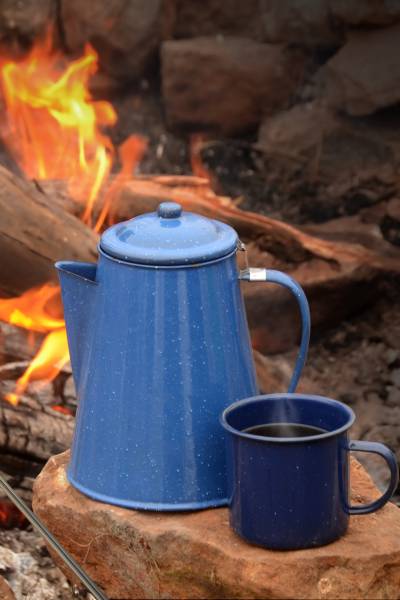
To perk coffee in the stovetop method, simply fill the bottom of the pot with cold water, and put your coffee grounds in the top basket. Use medium heat and be sure to pull the brew off before it begins a rolling boil. A rule of thumb is perked coffee is done when you start seeing bubbles hitting the glass lid every few seconds or so.
You will want to establish a routine with your stovetop percolator, and create an understanding. If you miss the “golden window” and leave your brew perking for too long, the stovetop method can easily become overprocessed and come out tasting burned.
The stovetop method is for the traditionalists who enjoy the brewing process… and for the risk-takers willing to gamble every morning with their first cup of coffee.
If you are looking for the perked taste, but you’re wanting a consistent brew, the electric percolator may be a good choice for you.
The Electric Coffee Percolator
While the stovetop percolator requires you to bring all of your coffee knowledge to bear to get a perfect cup of coffee, the electric percolator handles a lot of the details for you. They have the same set-up as their stovetop cousins, with a reusable filter basket for grounds up top and water at the bottom of the pot. But instead of using a stove as a heat source, they come with their own electric base.
Most electric percolators have the capability to time the brew and turn it off automatically when your coffee is ready. If your percolated coffee is too strong for your liking, you can still adjust the length of the brew manually by setting a timer and unplugging it when you decide it is done.
The end result should be a cup of joe similar in taste to french press, and (in my opinion) a step up from the taste you get with a drip coffee maker.
The Perfect Cup

Coffee-drinkers are always on the search for the perfect cup of coffee. Each brewing method has its own “best practice” to achieve perfection.
To make a perfect cup of coffee with an electric percolator, you should take into consideration the beans you use, the roast, the grind, and the coffee to water ratio. While techniques like your brewing time and water temperature are also important factors, your electric coffee pot should be controlling these for you.
Choosing Your Coffee Beans
When choosing the best coffee bean for your percolator, you want to steer away from beans with high acidities such as those grown in Papua New Guinea, Ethiopia, and Kenya. More mellow beans from Columbia, Brazil, and even Indonesia will make a much better pot in high heat methods.
Generally, subtle flavors and coffee notes won’t show up well with an electric percolator since percolation uses higher temperatures than many brew methods. So if you have more artisan beans, you may want to use another method such as a french press to show them off to their best advantage.
The roast you choose is very important, though. Dark roasts will become bitter very quickly in a percolator since the coffee recirculates through the grounds. Medium to light roasts will work best to give you a strong, rich taste without becoming overprocessed.
Use a Coarse Grind
One drawback to the percolation method is finding grounds in the bottom of your coffee cup. No one wants the last memory of their morning coffee to tainted by a mouthful of sludge! The cowboys in the wild west solved this problem by mixing a raw egg (and sometimes eggshell) in with the grounds before brewing. As the egg coagulated with the heat, it kept the grounds from running free through the brew. The egg also served to neutralize some of the acidity and bitterness caused by using boiling water to brew.
If you are not interested in adding an egg to your coffee pot, you can use a coarse grind to make sure your grounds don’t fall through the holes in the stainless steel coffee basket. Some percolators also offer paper filters to fit their pot for added protection.
Fine grinds also extract more rapidly than a coarse grind. While a fine grind is great for methods like espresso, it will extract too much flavor too quickly in the percolation method. The coarser the grind, the slower the extraction, and the less bitter your brewed coffee will be when using a percolator.
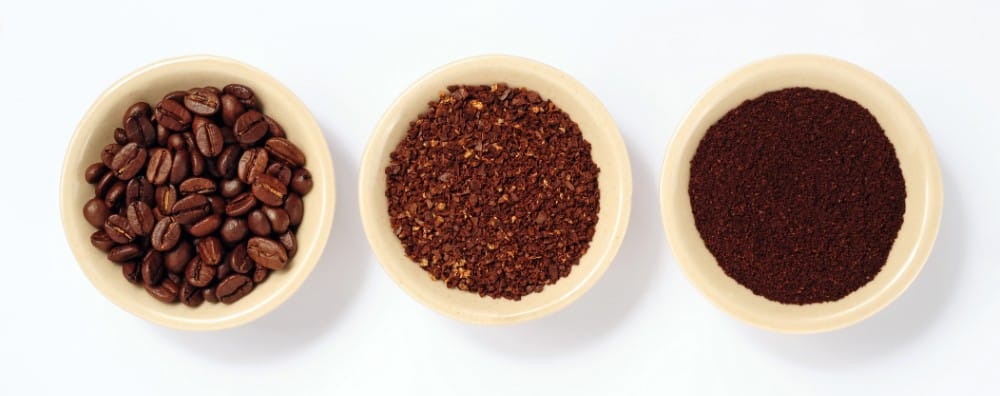
Check Your Coffee:Water Ratio
The amount of coffee and how many ounces of water you use will be just as important in percolation as with any other coffee making method. We recommend starting out with a 1:15 ratio… which would translate to be about 2 grams of coffee per ounce. If your percolated brew is too strong for your liking, scale it down until you find the right balance for your coffee pot and your taste buds.
Buying an Electric Coffee Percolator
If you are in the market for a good electric percolator, some of the most important factors to take into consideration will be material, size, and speed.
Best Material: Stainless Steel
The material of your coffee pot is so important when you brew coffee. Look for a model with a stainless steel pot and coffee filter. Electric percolators that are made out of stainless steel will give you the best coffee and the cleanest taste.
Steer away from plastic or aluminum parts as much as possible. These not only affect the flavor but may also leach harmful chemicals into the brew.
The Brew Speed
When you wake up in the morning and are ready for your cup before you start your day, you will find that each minute counts when waiting for your first cup! Many electric percolators are able to brew coffee at one cup per minute. It is a good idea to check what brew time you are looking at before making your final decision.
Size (May) Matter
Depending on how many people you have in your family that drink coffee, size may be an important factor. Getting a 12-cup as opposed to 8 may be the difference in everyone drinking coffee together on Christmas morning, and having to brew coffee all morning for everyone to get their cup of joe. You can always make less in a bigger coffee pot if you are the only one drinking on a day to day basis.
Amazon Reviews
It is also a great idea to check out the Amazon customer reviews before buying. This will help you see the pros and cons of the model from unbiased buyers before you make an investment.
Some other factors to consider:
- No-spill pour spouts
- Heat-safe handles
- Ready indicator lights
The “Perks” of Percolation
Percolated coffee was the main way to drink coffee for almost one hundred years and you can almost taste the nostalgia when you percolate your cup of joe! Drip coffee makers came into style and pushed percolators out of the limelight, but old legends never die. The sound of your percolator brewing coffee and the strong coffee taste add up to get your morning off to the right start. Also, percolators eliminate paper waste with their reusable stainless steel coffee filters, which I’d say is definitely a perk!
Final Thoughts
Using an electric percolator can be a great way to get a strong cup of coffee while not having to work too hard for it. This brewing machine takes a lot of the variables out of the equation and lets you focus on the fun part… choosing the right bean for the ultimate perked taste. Also, you never have to worry about running out of filters! With an electric pot in your home, you can revisit the traditions of the past while still enjoying the comfort of modern technology.



